Mapping Intuition: An Interview with Victoria Martinez
Victoria Martinez’s work explores landscapes, systems of power, and archiving particular sites as a form of honoring histories. In her abstractions, there are portals of reimagining spaces and memories, as well as embracing alternative methods of mapmaking. This is most notable in the material layers and textured textiles that are painted and transformed into an intuitive language.
On the occasion of Next Chapter, Victoria’s solo exhibition at TSA Chicago, Eva Mayhabal Davis, co-director at Transmitter asked a few questions to contextualize Victoria’s work further.
EMD: One of the premises in your work, is yourself as the flâneur, the observer of the city. Can you take us on a journey—what do you look for when you wonder or what have you come across recently that caught your eye? How do you eventually translate this into painting?
VM: I observe murals and decaying paint. I study the geometry and surface of public art, and how it varies between metal and brick. I'm currently based in Chicago and live in Pilsen, where I was raised. Every time I walk to the 18th Street pink line station, I photograph different intersections of the paintings that exist on the stairs leading up the trains. The steps and walls are covered with vibrant murals depicting various perspectives of Mexican iconography including Aztec calendars, nature, combinations of Indigenous and colonial architecture, and Selena. A lot of it is decaying or buffed and I believe it will be repainted soon so I'm documenting the space to preserve some of the culture for my archives. I love to examine different angles of the stairs and walls that I feel are often overlooked. I see fascinating compositions made of color fields and aging paint that creates this rich texture. I translate these perspectives into my own paintings by allowing my intuition to guide me. I reiterate the murals and architecture through abstract painting with fabric, dyes, and bleach.
EMD: This brings various inquiries to mind, when you describe layers that peel and decay or build up on top of each other. Are you conscious of the direct influence of the urban space, does your work connect outside of the urban environment?
VM: I’m definitely conscious of the direct influence of the urban environment, especially because I grew up in the Pilsen community. This neighborhood is full of murals and graffiti and it helped me develop my art practice. I have always been inspired by the scale and color palettes included in public art. Furthermore, I love to travel to Latin America because I have a lifelong commitment to researching my Mexican roots and its cross-cultural connections that relate to additional parts of the world. I research textiles, archaeological sites, and ancient pyramids when I travel. I believe there is an association between murals and the monumental scale of the pyramids.
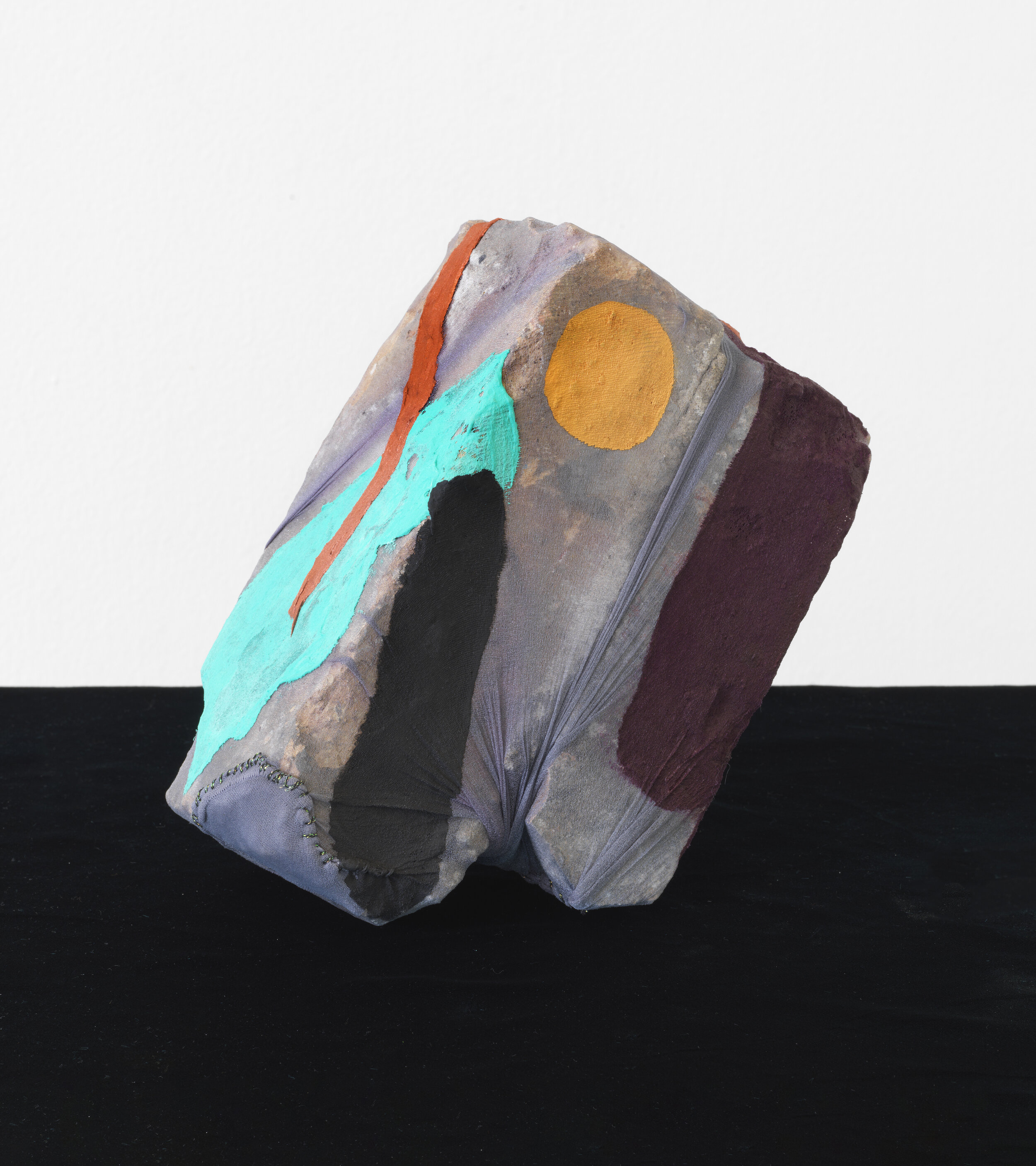
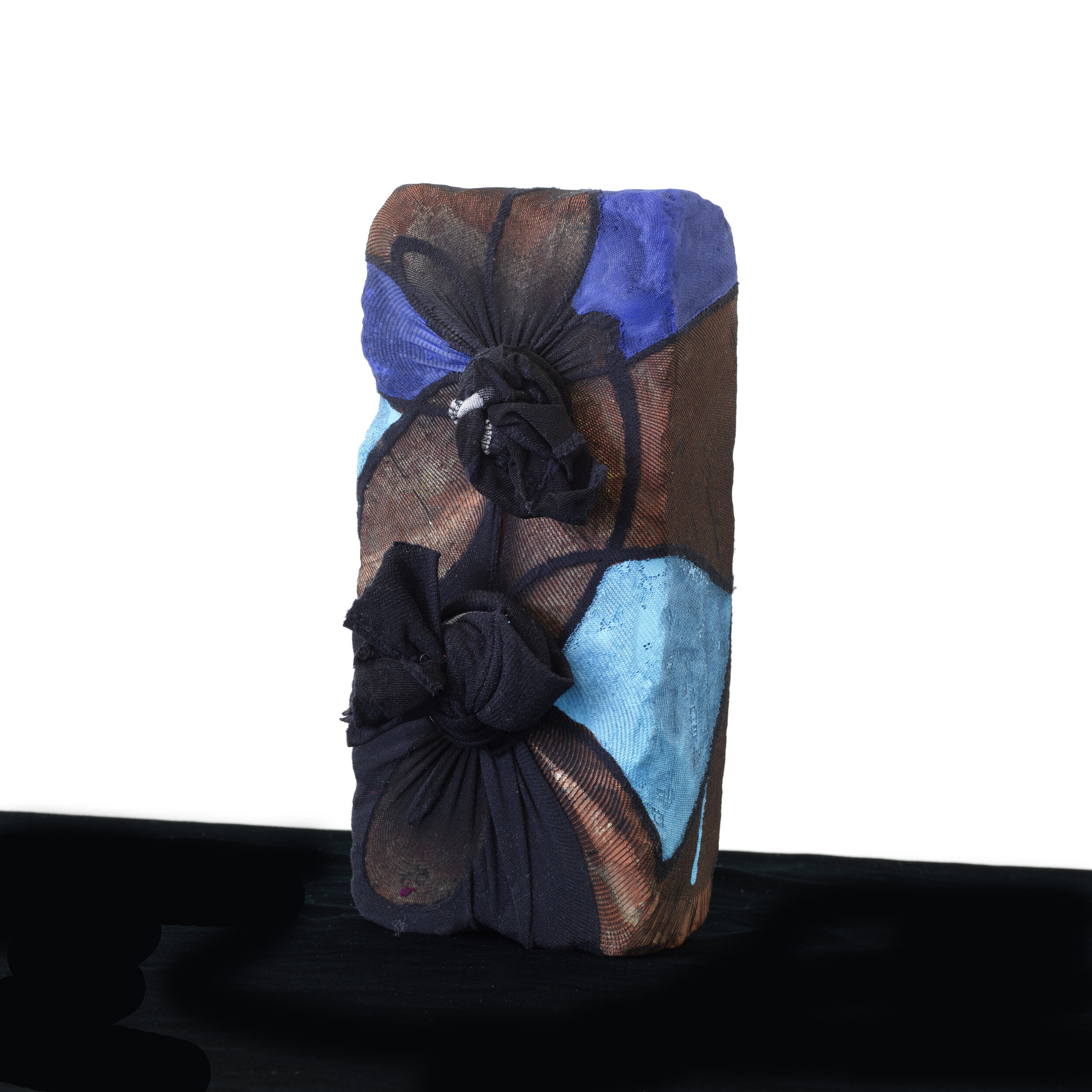
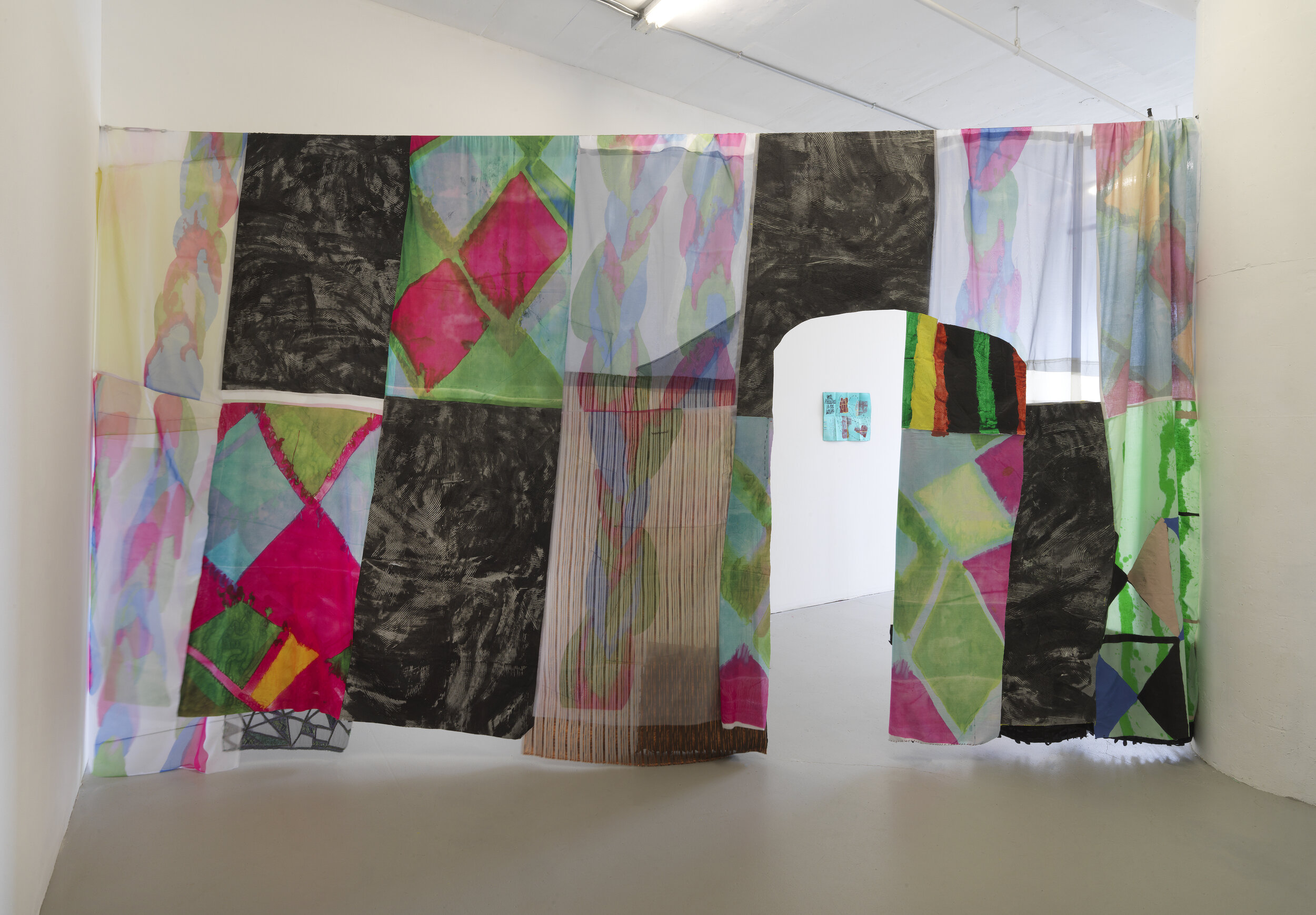
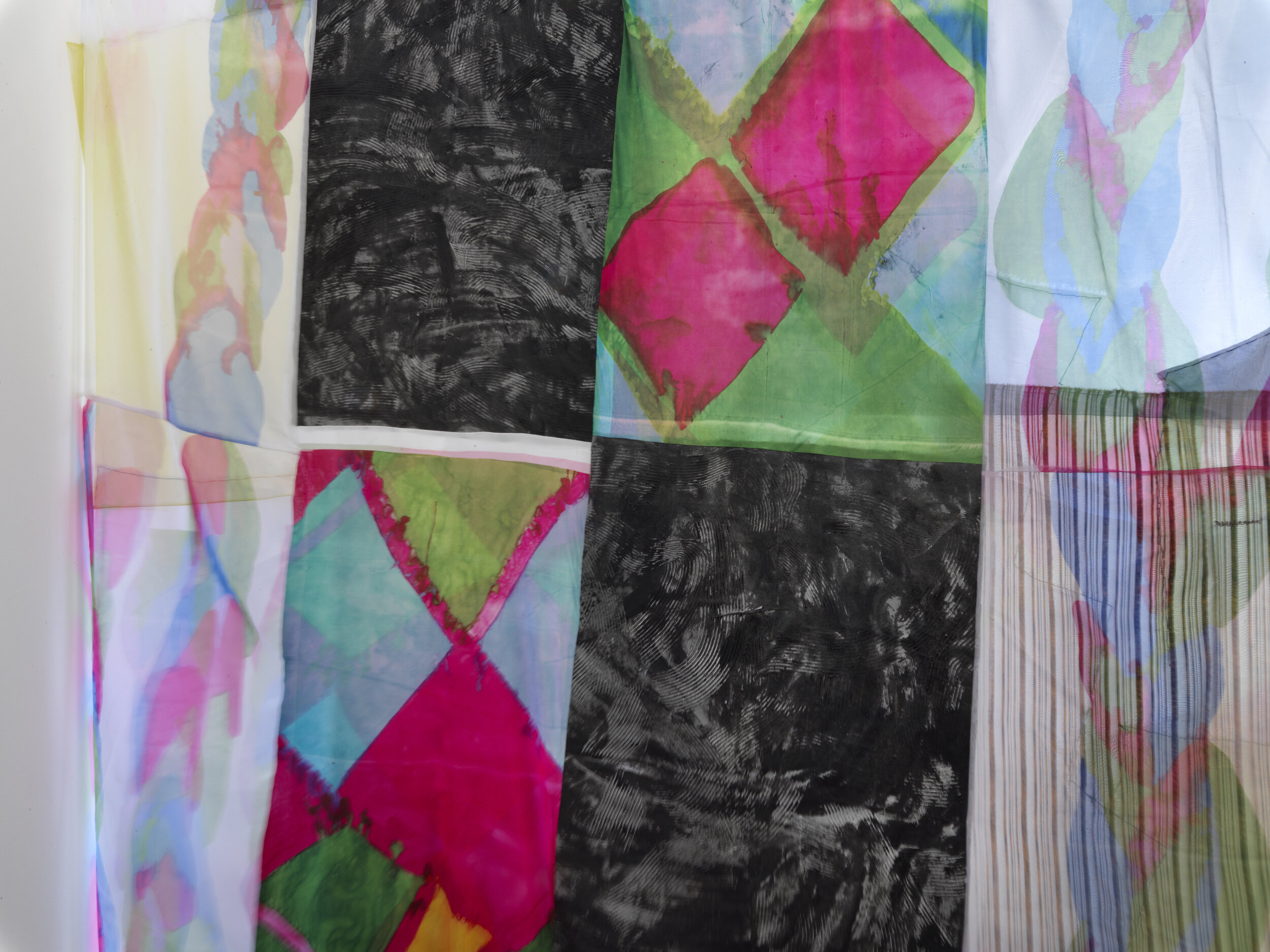
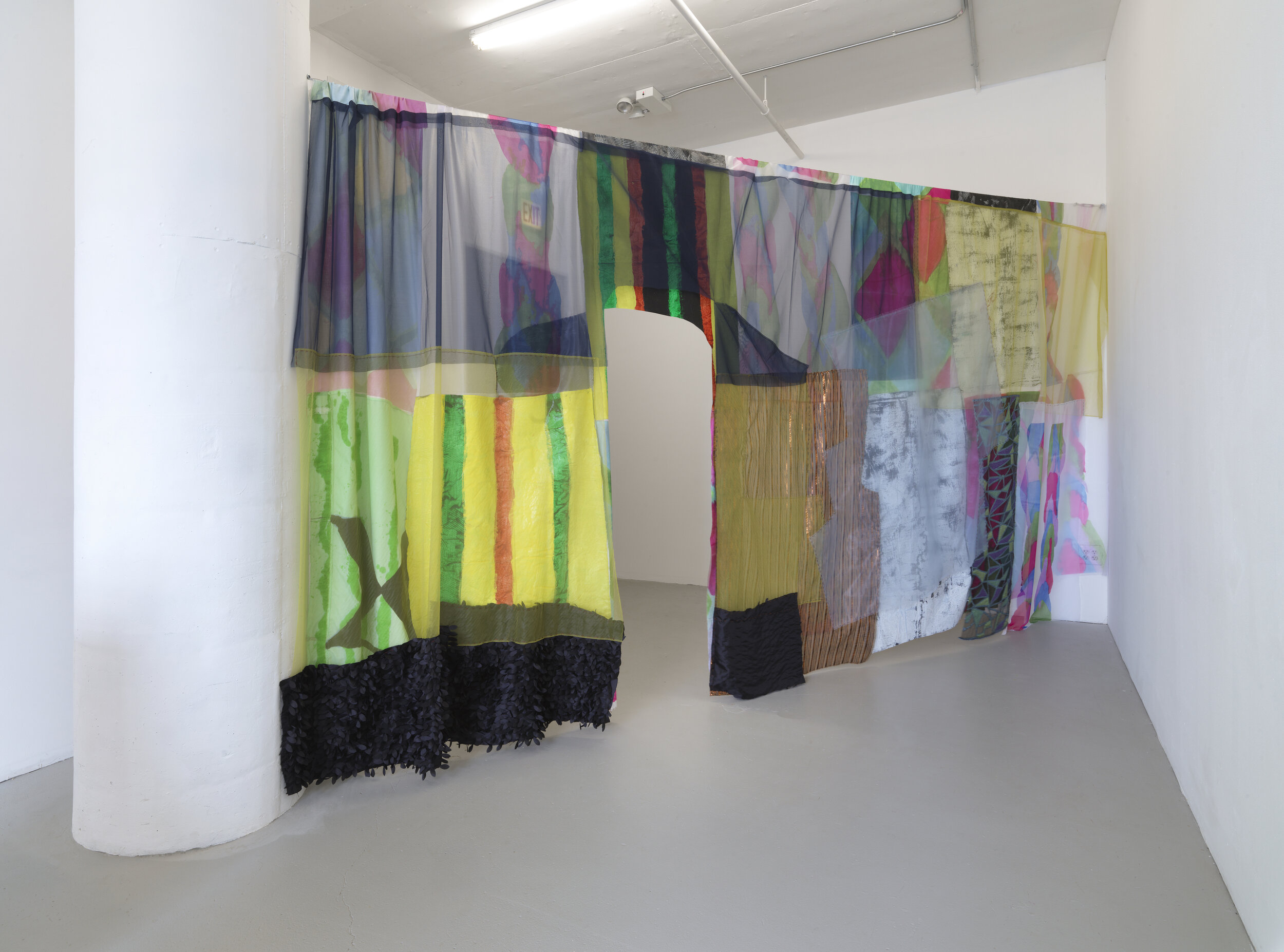
EMD: I like the concept of building blocks and the immediate and intricate relationship of the grid system. You have this continued interest in studying ancient places, and through your art, you’re citing a memory of the sacred sites you’ve visited in the past. It’s like these spaces function as a place of study and meditation for you.
VM: In a sense, I feel like I'm viewing a live encyclopedia. It’s all about the experience of being there in person to understand a morsel of the intellectual and spiritual strength that once existed on earth. I believe it still exists. One site where I felt the most alive was in Bacalar, Quintana Roo in Mexico. I didn’t see pyramids but I had the chance to experience Lago Bacalar (Lake of the Seven Colors), which consisted of seven cenotes. A cenote is a natural well, and Bacalar’s cenotes dropped as deep as 150 meters. From what I learned in Bacalar, cenotes are associated with Indigenous rain gods and are the source of where stars are born. During my trip, I met a chef and we went on an adventure with a surfer/pirate on a makeshift boat. One of the most memorable cenotes the surfer showed us felt like a cloud. I remember getting off the boat and sitting on white sand. The clouds and the sky were the exact same color of the sand. That's the moment that inspired me to create maps. I wanted to recreate and visually document that specific place in time because I couldn’t believe that I ended up there. I wasn’t planning on visiting Bacalar during my trip but I took a risk and it was one of my best experiences as an artist because the water took away a lot of emotions from me and granted me new strength.
A map is a form of documentation. I remember an art history course I took in graduate school, which was about Mexican art in the sixteenth century.The professor would say that there aren’t enough documents to provide the history of Indigenous people and their contributions to Mexico. However, there are plenty of drawings and maps of how colonizers directed the indigenous population to construct churches across Mexico. This academic course motivated me to create artwork based on what I see and study in Latin America and the U.S., and I am currently developing a series of maps as documents of my existence in the arts.
EMD: Can you talk more about your experiences with textiles? Where does your passion for fiber stem from? Where in Mexico have you gained more insight?
VM: My grandmother taught me how to hand sew when I was a child. However, my first research trip was to El Salvador when I was twenty-three. I had the desire to learn from women and expand my textile knowledge outside my academic training in the United States. I worked with a collective of women through Walls of Hope, an art and human rights project that once existed in Central America. Through this experience, I led painting workshops to the collective and they led embroidery workshops where I learned a lot about the history of El Salvador. We created a large-scale installation that combined the techniques and exhibited the project in their community.
Moving on, I believe there are several different ways to learn, which is part of the reason why I go to Mexico. My most recent trip was to Oaxaca where I spent time meeting textile artists and studying at numerous places. Some of the places included Centro de las Artes de San Agustín, Museo Textil de Oaxaca, Fundación Alfredo Harp Helú Oaxaca, and Instituto de Artes Gráficas de Oaxaca. I read through various books on textiles and painting and started to think more deeply about painting and how the history of painting cannot exist without textiles. I also read about Anni Albers and her site visits to the pyramids of Monte Albán in Oaxaca. She spent a lot of time studying the pyramids and created weavings in response to what she saw. I admire this process and am grateful that Anni Albers took the time to focus on this type of project in Mexico. However, I feel that there is space and time for this project to be reiterated. There are many Indigenous groups in Oaxaca that should be included in this type of project because they are the most knowledgeable on the subject, landscape, and history. Additionally, the natural dyes that exist in Oaxaca need to be acknowledged and celebrated.
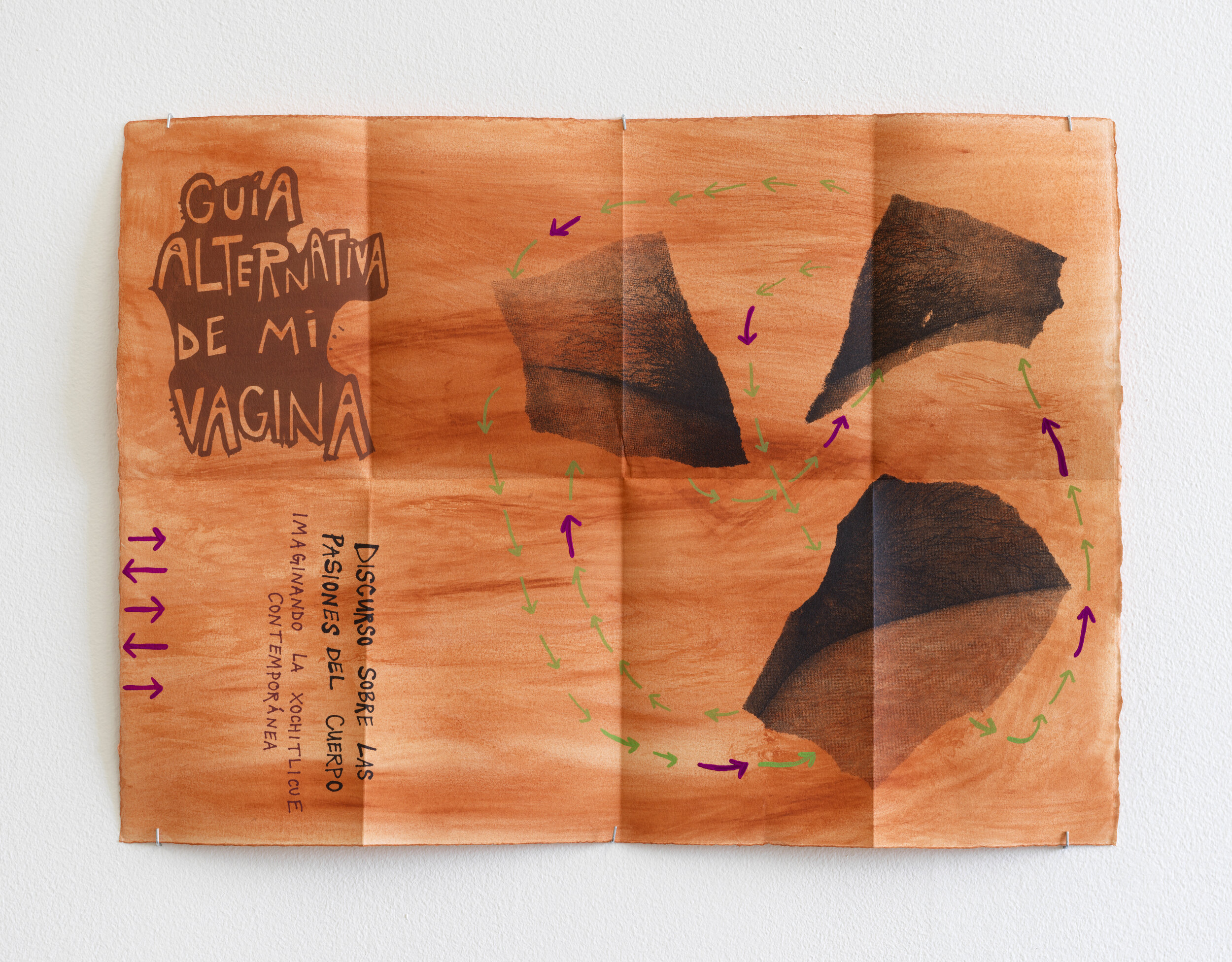
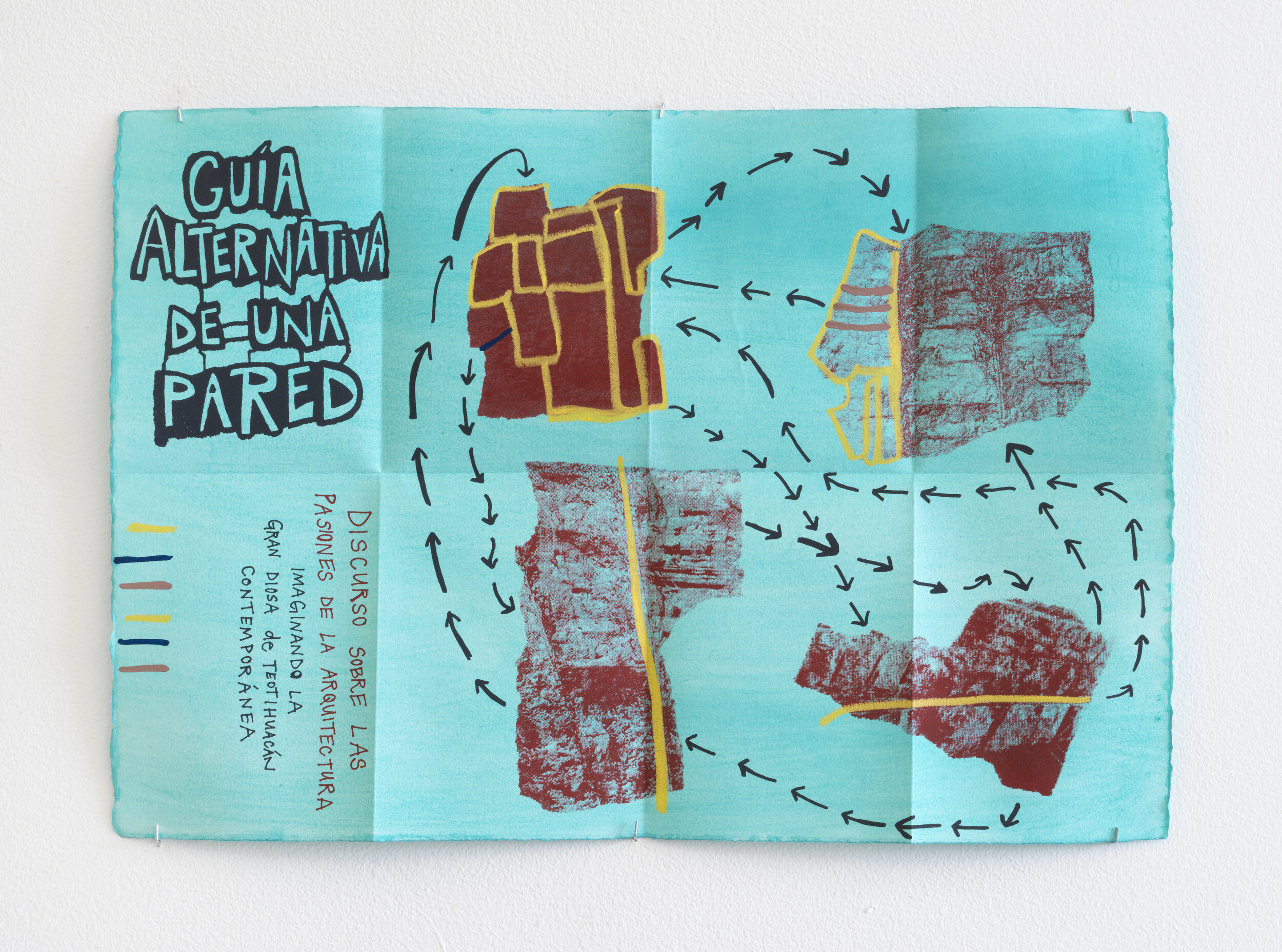

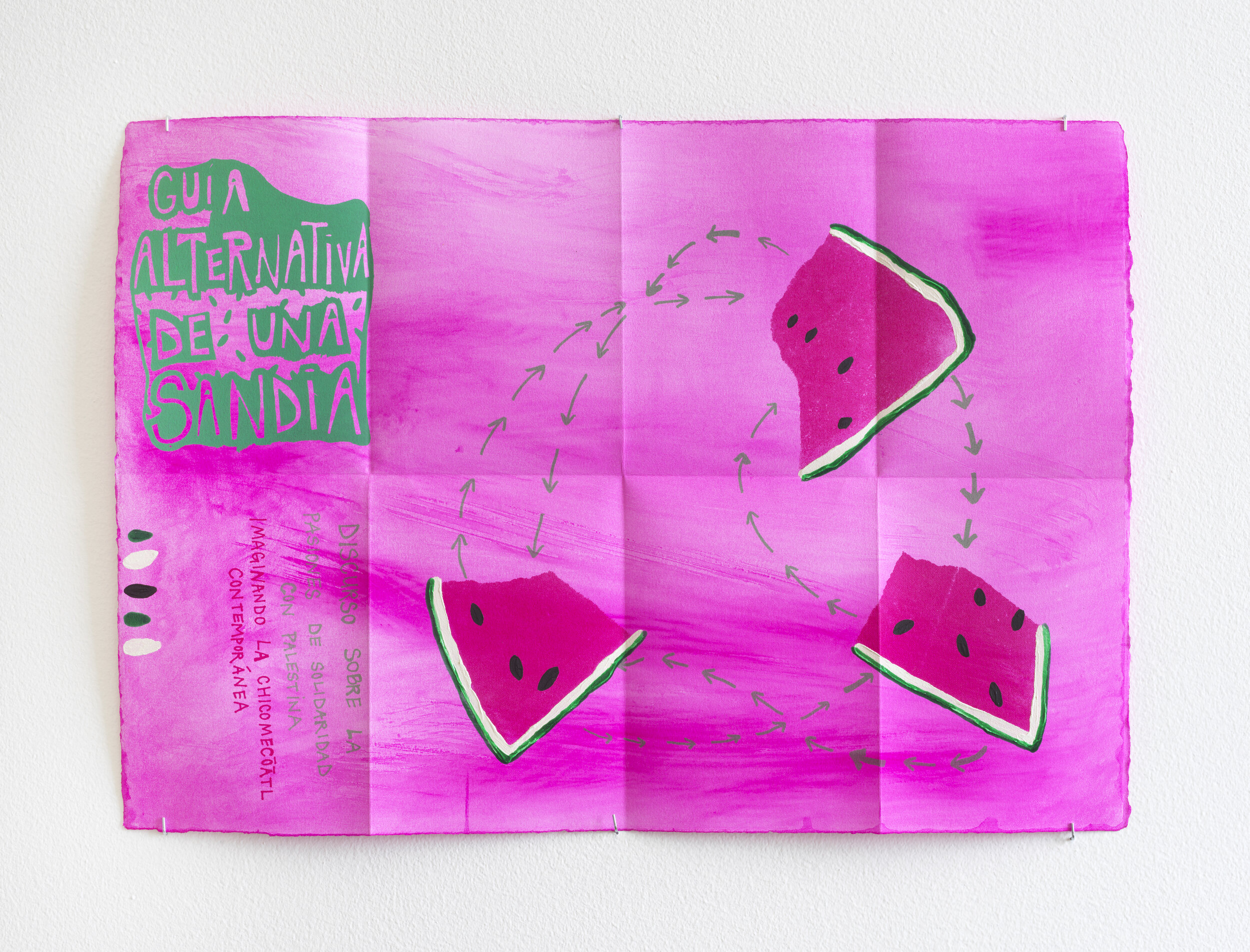
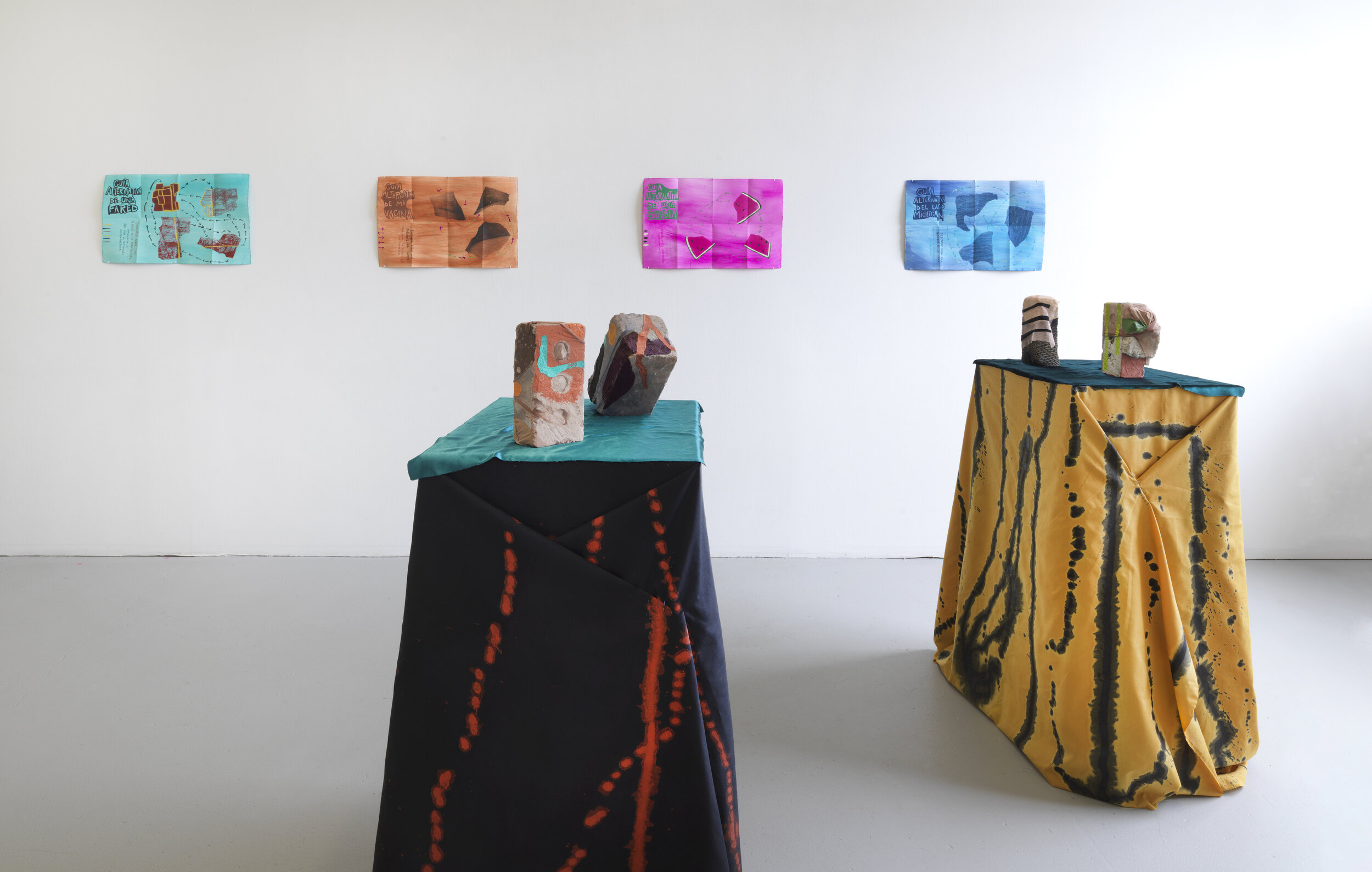
EMD: Your new maps in your recent solo show “Next Chapter” feel like the beginning of something bigger. Can you please describe what you're thinking about in terms of expanding this body of work?
VM: The maps are very exciting for me. I want to continue making them and expand the artwork into a large-scale project that requires the public to interact with the work. I currently made maps that include fragments of industrial walls, fruit, Lake Michigan, and my body. I imagine creating large sculptures with bricks that I cover in paint and textiles to replace the fragments of the industrial wall that I printed in my maps. The sculptural map would exist in a public space like a beach or a park and I would invite people to explore the project. The map would be activated by people exploring the sculptures. Their footprints would replace the arrows that I printed in my maps, as their steps are another form of drawing and mark making. My goal is to make the maps a collective effort in different sites so I can share my vision with people.
Victoria Martinez (b. Chicago, IL) received her B.F.A. from the Minneapolis College of Art and Design in 2010 and an M.F.A. From Yale University School of Art in 2020. She has exhibited at the Yale University Art Gallery and the National Museum of Mexican Art, and her work has been critically appraised in Poetry Foundation Magazine and The University of Chicago Press. Upcoming projects include a solo exhibition at the San Jose Museum of Quilts and Textiles in California and an art feature in New American Paintings.
Eva Mayhabal Davis (b. Toluca, Mexico) She is a cultural advocate, working directly with artists and creatives in the production of exhibitions, texts, and events. Based on occupied Lenapehoking (New York City). She has curated exhibitions at BronxArtSpace, MECA International Art Fair, Queens Museum, Smack Mellon, The Bronx Museum of Arts and is a co-director at Transmitter, a collaborative curatorial initiative. Bridging cultural and community building as an Intake Paralegal at UnLocal, Inc, a non-profit organization that provides direct legal aid and community education to New York City’s undocumented immigrant communities.
